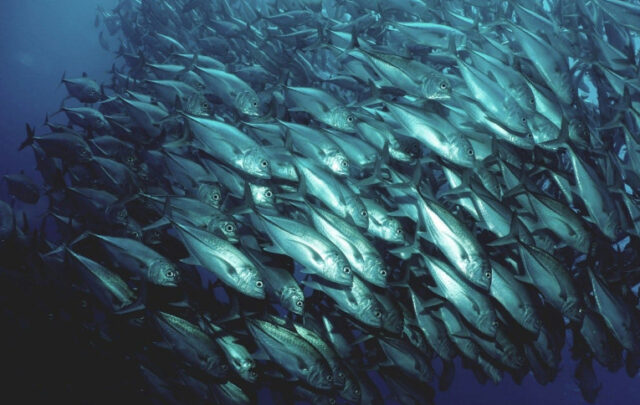Peak Oil: Apocalyptic Environmentalism and Libertarian Political Culture
Matthew Schneider-Mayerson
(The University of Chicago Press, Oct. 2015, 267 pp., $27.50)
In 2011, while working toward a Ph.D. in American Studies at the University of Minnesota, Matthew Schneider-Mayerson began a study into the peak oil community. Approaching his subject from the perspective of a social scientist, he conducted his research by way of surveys, interviews, field notes and participant observation (the latter two gleaned through attending the 2009 Association for the Study of Peak Oil and Gas international conference in Denver). His book Peak Oil: Apocalyptic Environmentalism and Libertarian Political Culture is the result of this research. It investigates the ideology and subculture of “peakists,” explores how their movement was influenced by the ascendancy of libertarianism into mainstream American politics and the rise of Internet technology, analyzes peak oil-themed fiction, probes the reasons behind peakists’ political quiescence and discusses the peak oil subculture within the context of white masculinity and apocalyptic retrosexuality.
It’s a mixed bag. On the one hand, it represents an intriguing and largely sympathetic glimpse into the early 21st-century cultural phenomenon that was the American peak oil movement. (Schneider-Mayerson writes about it in the past tense because he contends that it no longer exists as the “vibrant social formation” it once was.) On the other hand, the portrait that the book affords is incomplete. Schneider-Mayerson understands the core aspects to peak oil, even if he stops short of being able to recognize it as the predicament that it is rather than as a problem with a solution. He acknowledges the impossibility of infinite growth and grasps that we face not the complete exhaustion of oil, but rather the end of easy oil. His one big fallacy is his assumption that societal decline can still be averted at this point, and herein lies his misguided criticism of peakists as being politically quiescent. In addition, his review of the peakist literature, judging by both his discussions and bibliography, has significant gaps.
 To take one example, consider how he proves he hasn’t given more than a cursory glance to the work of one of the preeminent peak oil thinkers and authors, John Michael Greer. The only time he mentions Greer is when he includes the name of Greer’s blog, The Archdruid Report, in a list of sites culled from his surveys. If he had bothered to learn something about Greer beyond merely the name of his blog, he would have known that there’s another spot in his book that cries out for a reference to Greer’s ideas. The passage in question is one explaining how peakists held wildly divergent views about the likely shape of the future. Among the more dissident viewpoints, he notes, was that we face a slow, uneven decline unfolding over lifetimes, not the Hollywood-esque scenario of sudden and utter collapse. Greer literally wrote the book on this–coining the term “The Long Descent” to describe it–so introducing him into the discussion would not have been inappropriate.
To take one example, consider how he proves he hasn’t given more than a cursory glance to the work of one of the preeminent peak oil thinkers and authors, John Michael Greer. The only time he mentions Greer is when he includes the name of Greer’s blog, The Archdruid Report, in a list of sites culled from his surveys. If he had bothered to learn something about Greer beyond merely the name of his blog, he would have known that there’s another spot in his book that cries out for a reference to Greer’s ideas. The passage in question is one explaining how peakists held wildly divergent views about the likely shape of the future. Among the more dissident viewpoints, he notes, was that we face a slow, uneven decline unfolding over lifetimes, not the Hollywood-esque scenario of sudden and utter collapse. Greer literally wrote the book on this–coining the term “The Long Descent” to describe it–so introducing him into the discussion would not have been inappropriate.
In the introduction and first chapter, Schneider-Mayerson summarizes his methodology, theoretical framework and core arguments, and lays out some basic facts about the population under study. He explains that he chose to focus on peakists in America because this is where the movement had the greatest following, and he roughly estimates the total number of American adherents to have been in the hundreds of thousands. He dates peakism’s beginning and end to 2004 and 2011, respectively. As for his survey study sample, it represents the readership of two popular peak oil-related blogs, those of James Howard Kunstler and Kathy “Peak Shrink” McMahon. (In his acknowledgements, the author thanks Kunstler and McMahon for posting links to one of his surveys on their sites.)
Judging from this sample, American peak oil “believers” (to use Schneider-Mayerson’s term) tended to be educated, white, middle-aged men with liberal political leanings. For the most part, they met one another on the Internet but never face to face. At the heart of their shared ideology was the conviction that “impending oil scarcity would lead to the imminent collapse of industrial society and the demise of the United States.”
As one might guess from his use of the word “believers,” Schneider-Mayerson makes a case for peak oil being a belief system with religious dimensions–and to me this is entirely valid. Though some in the community may be offended by having their ideology likened to a religion, the fact is that it quite literally is one according to Greer’s notion of a secular religion. (Greer has argued that the two dominant secular religions of industrial society are the religion of progress and that of apocalypse; and while peak oil is nowhere near as prominent an example as these two, it nonetheless fits Greer’s definition of a secular religion.) The only fault I find with Schneider-Mayerson’s argument about peak oil being a religion is his assertion that “peakism lacks a conception of the sacred or supernatural.” What do you call a reverence for the inviolable laws of thermodynamics or the energy slaves that power our lives, if not a set of sacred tenets?
Continuing with his metaphor of peak oil as a religion, Schneider-Mayerson refers to Kunstler as “peak oil’s Jeremiah.” Kunstler’s blog, television appearances, speaking tours and 2005 bestseller The Long Emergency all served, in Schneider-Mayerson’s view, to “spread the peak oil gospel.” Again, I think it’s legitimate to make this religious parallel. The Long Emergency truly was the peak oil bible for many people, this reviewer included; and, just as Jeremiah was among the major prophets of the Christian Old Testament, so too was Kunstler one of the most famous peak oil prognosticators. Where the metaphor breaks down a little is that Kunstler was hardly the most pessimistic in his outlook. Far more Jeremiah-esque was conservation biologist Guy McPherson, who has been predicting human extinction within our lifetimes due to peak oil’s even direr cousin, climate change.
One of Peak Oil’s central arguments is that the movement took the shape it did largely because of the libertarian shift and the network effect. The phrase “libertarian shift” refers, in the author’s words, to the increasing tendency of Americans across all party lines and ideologies to “conceive of themselves and their citizenship in distinctly libertarian terms (individualistic and private)” Schneider-Mayerson argues that the use of Internet technologies has precipitated this trend. Though the author never explicitly defines the network effect, he uses the phrase to describe how the Internet has brought about our modern-day networked society. Because peak oil was predominantly an Internet phenomenon, with face-to-face meetings among followers being relatively uncommon, this is certainly a relevant point. In a nutshell, this chapter of the book argues that the libertarian shift and the network effect colluded to make peakists “alone together.”
It’s telling that Schneider-Mayerson chooses to address apocalyptic popular culture and the aforementioned political disengagement of peakists in a single chapter. As this juxtaposition suggests, the author attributes peakists’ dismissal of the efficacy of political activism partly to their having seen and internalized a lot of disaster films. What’s the point of activism, after all, if you believe that the world is about to end spectacularly as in some blockbuster movie? Seventy-eight percent of his sample of peakists had seen Independence Day and 75.2 percent had seen Mad Max (to give just two examples), and in their comments many admitted that such apocalyptic films had to some extent influenced their thinking about the future. One respondent implied that movie scenarios provide a convenient framework for such thinking because they’re so much less complex and nuanced than real life: “It’s difficult to avoid letting fictional portrayals influence your thinking about situations with so many variables.”
Yet it’s silly to conclude that peakists’ disinclination toward political action was caused by their exposure to apocalyptic fiction. While disaster films undoubtedly supplied plenty of ideas about what the world ahead might resemble, they aren’t what made peakists believe in a dystopian future. Rather, this belief was the result of their willingness to take the implications of today’s situation to their logical conclusions. The political disengagement bemoaned by Schneider-Mayerson should thus be addressed in the context not of fiction, but of the plethora of evidence supporting such an attitude.
Alas, the author isn’t disposed to think in this way. More than once, he betrays that while he may be decently read on peak oil, he hasn’t comprehended all that he’s read. Consider this statement: “Whereas most environmentalists now see resource scarcity as tightly bound to economic and social issues that are highly variable, peakists tend to hold fast to a simplistic version of the limits-to-growth environmental paradigm where economic and social issues are at the mercy of ecological limits.” This sentence would be spot-on if the word “simplistic” were replaced with “accurate.” How does one square this suggestion that social and economic factors are capable of magically bringing oil into existence–a standard folly of cornucopian economists–with Schneider-Mayerson’s otherwise solid handle on ecological economic principles?
The most interesting part of the whole post-collapse fiction/political quiescence chapter is its survey and review of the major peak oil novels to have been written to date. The eight books that the author examines range from Kunstler’s famous World Made by Hand to a number of lesser-known, self-published novels, such as Caryl Johnston’s After the Crash: An Essay-Novel of the Post-Hydrocarbon Era. While this selection covers only a fraction of the entire post-oil fiction canon, it includes all the most influential works. Where the analysis shines the most is in demonstrating the key ways in which post-oil novels differ thematically from traditional American post-apocalyptic narratives. The latter typically show diverse groups setting aside their differences to meet a common challenge, and, through their collaboration, bringing about a “collective national regeneration through crisis.” Post-oil novels, in contrast, are more likely to show the return of antagonisms among races, regions and ethnic groups, as well as the relegation of America to history’s dumpster.
Peakists believed that national governments and other large-scale institutions would prove ill-equipped to handle the crisis–since a world of scarce oil would favor small-scale, localized enterprises–and this is a primary reason why they generally forewent political activism in favor of individual preparation. Drawing on responses to his surveys and comments posted to online forums, Schneider-Mayerson gives a detailed account of the most common types of preparedness activities. He found that nearly 75 percent of survey respondents had stockpiled goods, one in five had changed occupations, 53 percent had curtailed the amount of driving they did and 32 percent had purchased more fuel-efficient cars. Some other common preparedness measures included purchasing land, investing in precious metals or long-term oil futures, getting in better physical shape and adjusting psychologically to the specter of harder times. Only 11 percent of respondents had done nothing to prepare.
It wasn’t, of course, universally true of peakists that they eschewed politics. Some notable outliers existed in this regard, the most famous being now-retired Republican House Representative Roscoe Bartlett, who in 2005 formed the Congressional Peak Oil Caucus along with Democratic Representative Tom Udall. Bartlett was ardently outspoken on peak oil, appearing in numerous documentaries on the issue and quoting at length from the preparedness site Life After the Oil Crash during speeches on the Congressional floor. That Schneider-Mayerson doesn’t mention Bartlett anywhere in this book is, to me, a mistake.
There was a great deal of support within the peakist community for those still processing their grief over the coming civilizational decline, and Schneider-Mayerson does capture some sense of this. However, he unforgivably omits an important figure from his analysis, Dr. Carolyn Baker. A trained psychotherapist, Baker has devoted the past eight years of her life to helping others transition, on an inner level, to a post-peak world. She’s done so by writing books, offering therapy and life-coaching services, hosting the popular radio show The New Lifeboat Hour and speaking at collapse-themed events. Peak Oil’s bibliography does list one of Baker’s books, so it’s clear that Schneider-Mayerson is aware of her work. He should have at least mentioned her somewhere in the main text.
On the other hand, this book properly acknowledges the contribution of clinical psychologist Kathy McMahon. Dr. McMahon gained international renown for her pioneering work on the psychological impacts of oil depletion, climate change and economic crisis. Peak Oil does a good job of recounting how she developed an alternative psychological model that upended the assumptions of most psychologists when dealing with ecologically aware patients. Chief among these assumptions was that people who exhibited an unusual level of concern over environmental issues, relative to most others, were either emotionally unstable or mentally ill, and thus in need of professional help. McMahon dissented from this by insisting that being distraught over environmental crises was an indication of good mental health, while adopting supposedly normal responses to humanity’s predicament, such as supporting resource wars or blindly trusting in human ingenuity, was a sign of pathology.
Besides giving a thorough, thoughtful account of McMahon’s work, Schneider-Mayerson praises her for walking her talk. “Judging from her frequent anecdotes,” he writes, “she seemed to have fashioned a rural life for herself that the woebegone survivors in Kunstler’s The Long Emergency would recognize and envy…She and her husband lived in a small town in rural Massachusetts where ‘people cut hay with a scythe, and build homes without power tools.'”
Psychologists weren’t the only ones to pathologize despair over peak oil. As every peakist knows, even the closest friends and family members of a peak oil-aware individual were apt to write off his or her concerns as irrational doomsaying. This book speaks pointedly to the social marginalization that resulted from this. Borrowing terms used by his survey respondents, Schneider-Mayerson reveals how those who made meaningful changes to their lives, rather than simply paying lip service to sustainability-related causes or buying “green” consumer products, were often ridiculed as “‘survival nuts,’ ‘hippies,’ ‘whackjobs,’ ‘tree-huggers,’ ‘kooks,’ and ‘crackpots.'” Consequently, many adopted the policy of never bringing up their views around friends, family or coworkers. Schneider-Mayerson says this state of affairs provided him with an unprecedented opportunity. Craving an outlet for their pent-up dreads, hopes and aspirations, many peakists eagerly shared their thoughts in the surveys, and as a consequence, this book “contains a level of detail about and analysis of the peak oil phenomenon that has not previously been possible.”
It always seemed to peakists that the ostracism they endured was driven largely by America’s unique culture of optimism, a suspicion that Schneider-Mayerson backs up with scholarly research. He cites in particular the work of historian C. Vann Woodward, whom he quotes as having called optimism a “national philosophy in America,” as well as that of social scientist Neil D. Weinstein. He also supplies citations for several cross-cultural studies that have corroborated Americans’ bias toward optimism. And he rightly declares that if American society is to effectively respond to peak oil and other ecological threats, it must break with its delusional outlook.
Given that peakism’s lack of female and racial minority representation was a major topic for debate within the community, Schneider-Mayerson’s chapter on the issue will be of interest to many readers. In seeking to understand why 75 to 80 percent of his survey respondents were men and 89 to 91 percent white, the author presents various possible explanations having to do with masculinity, metrosexuality and environmental inequality, as well as some ideas peakists themselves have promulgated. For me, the most compelling hypothesis he cites for the maleness of peak oil is one advanced by journalist Kurt Cobb. In a 2007 article, Cobb argued that the gender disparity reflected the fact that many peakists came from within the male-dominated oil industry.* As for the dearth of racial minorities, Schneider-Mayerson notes that peakism was a distinctly individualistic movement, and that individualism is a “raced and gendered philosophy.”
Peak Oil acknowledges, to its great credit, that while peakism has waned, the actual phenomenon of oil depletion hasn’t gone away and deserves our continued attention. “Whether it is imminent or two decades away,” the author writes, “the threat of energy scarcity should be taken seriously.” With his social science background, Schneider-Mayerson brings a valuable perspective to the issue, and I hope he continues to engage with it in his research. Let’s hope he also gets around to filling in the gaps that riddle this first book.
__________________
Notes:
* Kurt Cobb, “Is peak oil a guy thing?,” Resource Insights, Sept. 16, 2007, www.resourceinsights.blogspot.com/2007/09/is-peak-oil-guy-thing.html (accessed Mar. 1, 2017.)






